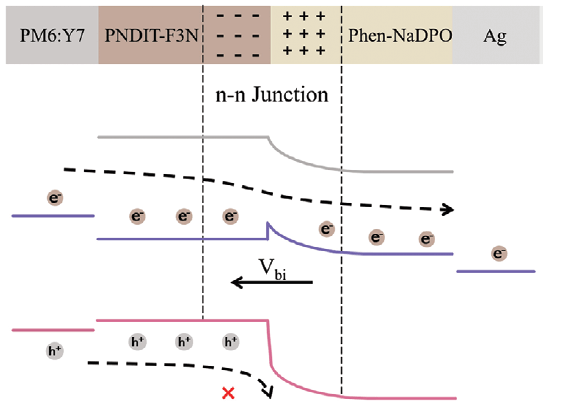An n-n Heterojunction Configuration for Efficient Electron Transport in Organic Photovoltaic Devices
Li, Y., Wu, X., Zuo, G., Wang, Y., Liu, X., Ma, Y., Li, B., Zhu, X.-H., Wu, H., Qing, J., Hou, L., Cai, W.,
Adv. Funct. Mater. 2022, 2209728.
https://doi.org/10.1002/adfm.202209728
Efficient electron transport layer (ETL) based on a novel n-n heterojunction arrangement for organic photovoltaics (OPV).
The group of Whanzu Cai at the Guangzhou Key Laboratory of Vacuum Coating Technologies and New Energy Materials stacked an n-type conjugated film (PNDIT-F3N) with an n-type small molecule film (Phen-NaDPO) achieving a water-fall like alignment of electron transport energy levels. Devices with the n-n heterojunction ETL showed performance increase of up to 30% compared to control devices based on the isolated PNDIT-F3N or Phen-NaDPO ETLs.
They used the characterization tool Paios to investigate the charge extraction and recombination lifetimes with transient photocurrent (TPC) and transient photovoltage (TPV) measurements, respectively. Both extraction and recombination lifetimes improved by up to 100% for the devices with the n-n heterojunction compared to Phen-NaDPO alone.

